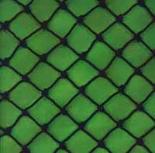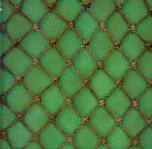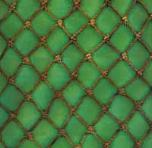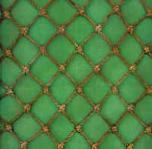Netting / Rope

In our mission to always use the highest quality and value materials available while maintaining our quality
standards, NETServices primarily uses 100% Dupont Type 66-728 Knotted Nylon Netting. Manufactured in the
USA………. proven in independent laboratory tests and in use to be far superior to any other netting material for
strength and UV / Weather resistance. Specially formulated and treated with UV & weather Stabilizers and
Inhibitors, it is without question the highest quality and longest lasting material available. Netting available with a
manufacture’s 5, 7, or 10 year warranty for material defects and outdoor life expectancy. The same material is
used for all sport and barrier netting applications with different mesh configurations and twine sizes appropriate for
the specific application.
10 Year Non-Prorated Warranty on #18 Golf Barrier Netting When Used On Driving Range!
| We Guarantee Our Netting To Be The Best Barrier Protective Netting Available. Made From The Highest Quality Materials; DuPont Type 66-728 K |
|
|
|
|
|
DuPont® Nylon Twine Strength Information and Specifications
Type 66-728 Knotted DuPont® Nylon, Dyed Black and Bonded, UV Stabilized, Used in DuPont® Nylon Impact Net
Available Twine Thicknesses: #15, #18, #21, #36, #72
Available Mesh Sizes (sq. measurement): 3/4”, 1”, 1-3/4”
Twine Breaking Strength:
Note: The breaking strength per twine measures the amount of weight needed to break the DuPont® nylon twine completely. The mesh-burst strength indicates the amount of weight necessary to break through all 4 twines per mesh in our DuPont® nylon impact net.*
#15: 144 lb./twine, 576 lb./mesh
#18: 191 lb./twine, 764 lb./mesh
#21: 241 lb./twine, 964 lb./mesh
#36: 381 lb./twine, 1524 lb./mesh
#72: 740 lb./twine, 2960 lb./mesh
*see “Twine Size Comparison Chart” to see how 66-728 compares to other netting materials.
Chemical Composition:
Type 6 DuPont® nylon and type 66-728 DuPont® nylon do not have identical chemical compositions. They are made from different ingredients (type 6: caprolactam; type 66-728: hexamethylene diamine and adipic acid). They also differ structurally; that is, in the way the polymer chains are able to align and bond together. Type 66-728 has twice the number of sites available for hydrogen bonding between polymer chains.
Benefit: type 66-728 has a tighter molecular structure with more hydrogen bonding providing better resistance to wear, while enhancing our DuPont® nylon impact net resilience.
Density/Hardness:
The measured densities (weight per volume) of type 66-728 and type 6 are the same, but type 66-728 is more crystalline.
Benefit: the more crystalline structure of type 66-728 helps the fibers retain shape better and provide enhanced resilience.
Melting Point:
Type 66-728 melts at 260°C, and type 6 melts at 220°C.
Benefit: nylon is resistant to damage and heat due to friction. Type 66-728 has the highest melting point due to it’s molecular structure.
Colorfastness:
A key component of dye lightfastness is the type of dye chosen. The dye diffusion rate fro type 66-728 is not as fast as for type 6. Even though it is more difficult to dye type 66-728, this is advantageous because it is also more difficult to remove dye. Consequently, type 66-728 is inherently more lightfast than type 6. type 66-728 is also more resilient to the diffusion of other molecules through the fiber, like ozone and nitrous oxide, which can harm the fiber or dye.
Benefit: type 66-728 will be more resistant to fading due to sunlight or atmospheric contaminants.
UV Exposure:
Raw (not dyed, not bonded, not stabilized) type 66-728 nylon tops the chart for strength retention after 9 months exposure in Florida. Simply put, when raw natural colored fibers were tested for 9 months of exposure in Florida sunlight, the DuPont® type 66-728 nylon retained the highest percentage of strength when compared to type 6 nylon, polyester, and polypropylene. The resistance to UV exposure and weathering increases substantially as UV stabilizers, dye-stuffs, and bonding agents are added in the manufacturing process. Starting with the right raw material is key in getting long life and durability.



